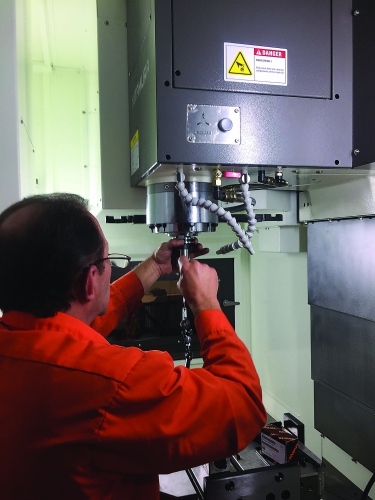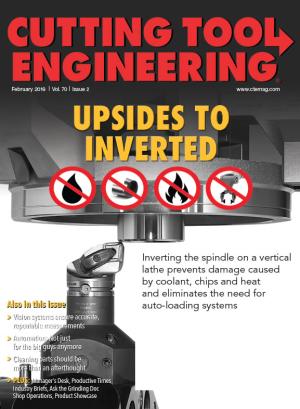Machine tool maintenance at many shops is seen as checking oil, changing batteries and occasionally cleaning machines when times are slow. Although it’s hard to stop a machine when jobs are hot and machinists want to machine, taking just two or three shifts’ worth of time per year can make a huge difference in boosting productivity and reducing machine downtime. The following four PM checks can have the biggest impacts:
1. At least once a year, check to ensure that your machine is level. A wireless ball-bar test is the fastest and easiest way to check, but other methods can be employed, such as machinist levels, ceramic squares and test cuts; however, these take longer and the information may be incomplete. Machines are often level until the table or saddle is moved, then the machine level changes. In almost every preventive maintenance procedure—especially if one hasn’t been performed in more than a year—at least one leveling pad is found to be very underpressured, and the geometries of the machine axes change as they are moved. Machines must be level and exert equal pressure on each pad. In addition, the pads should be tightly locked down.

A Knox Machinery service engineer calibrates a probe. Image courtesy of Know Machinery.
2. Ensure that lube oil goes where it needs to go. Pull back the covers on a machine that hasn’t been examined for a few years. There is a 90 percent chance a metering valve is blocked or a leak in a lube line is preventing lubrication from reaching a bearing, way or ball nut. For a simple check, pull back the way covers. Then have someone energize the lube pump while you watch for oil to reach the correct points. You must first wipe off the lines and lube points with a rag or towel so you can identify any leaks.
3. Clean fans and change filters. Fans on motors and drives must be clean to run efficiently and dissipate heat. An easy way to keep them clean is to attach Velcro strips around the fans and filters and attach filter material to the Velcro. In addition, change the filter material as often as needed.
4. Understand the importance of coolant. If there is one little secret that could make machinists’ lives better and boost machine productivity, it’s coolant. Bottom line: If you can’t take the time to monitor and properly maintain your coolant—emphasis on “properly”—hire someone to come in weekly or biweekly to check the actual coolant concentration and conditions and to make needed corrections. If your coolant supplier stops by infrequently and doesn’t have the means or expertise to check your coolant or to coach you about what to change, find a new supplier.
Developing an effective PM plan and performing maintenance with the proper tools is a great way to extend machine life. And, “scheduling your downtime” helps prevent costly breakdowns, which always come at the most inopportune times.
Related Glossary Terms
- coolant
coolant
Fluid that reduces temperature buildup at the tool/workpiece interface during machining. Normally takes the form of a liquid such as soluble or chemical mixtures (semisynthetic, synthetic) but can be pressurized air or other gas. Because of water’s ability to absorb great quantities of heat, it is widely used as a coolant and vehicle for various cutting compounds, with the water-to-compound ratio varying with the machining task. See cutting fluid; semisynthetic cutting fluid; soluble-oil cutting fluid; synthetic cutting fluid.


